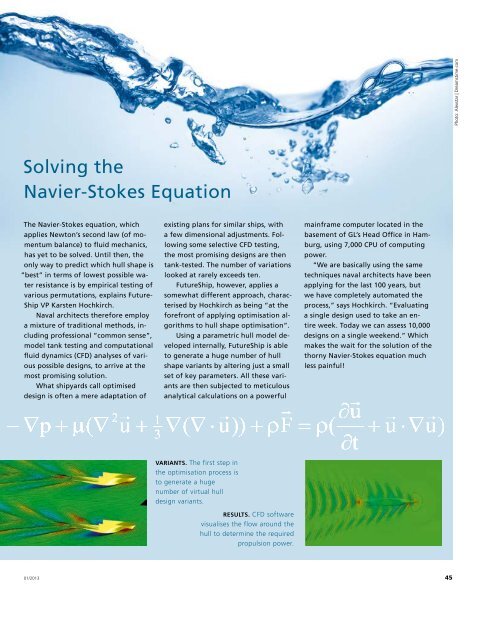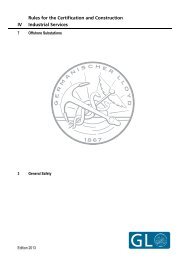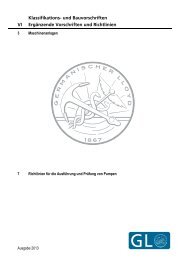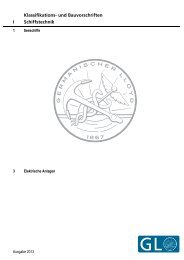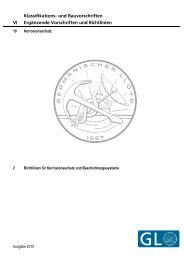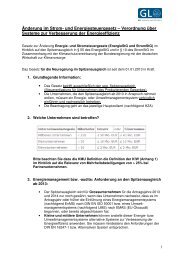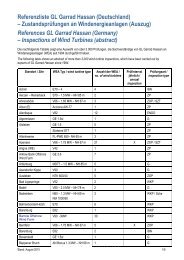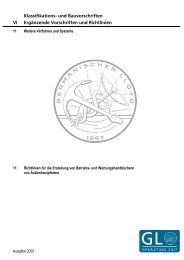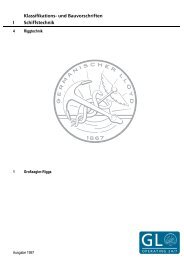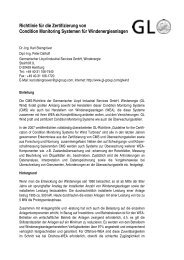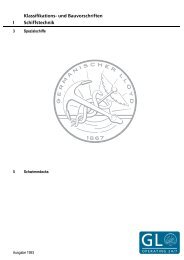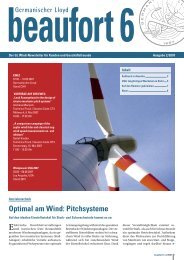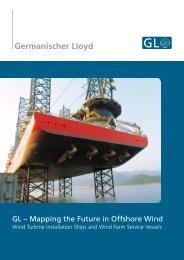Ways to Conserve Energy on Board - DNV
Ways to Conserve Energy on Board - DNV
Ways to Conserve Energy on Board - DNV
Create successful ePaper yourself
Turn your PDF publications into a flip-book with our unique Google optimized e-Paper software.
Pho<str<strong>on</strong>g>to</str<strong>on</strong>g>: Alexstar | Dreamstime.com<br />
Solving the<br />
Navier-S<str<strong>on</strong>g>to</str<strong>on</strong>g>kes Equati<strong>on</strong><br />
The Navier-S<str<strong>on</strong>g>to</str<strong>on</strong>g>kes equati<strong>on</strong>, which<br />
applies New<str<strong>on</strong>g>to</str<strong>on</strong>g>n’s sec<strong>on</strong>d law (of momentum<br />
balance) <str<strong>on</strong>g>to</str<strong>on</strong>g> fluid mechanics,<br />
has yet <str<strong>on</strong>g>to</str<strong>on</strong>g> be solved. Until then, the<br />
<strong>on</strong>ly way <str<strong>on</strong>g>to</str<strong>on</strong>g> predict which hull shape is<br />
”best” in terms of lowest possible water<br />
resistance is by empirical testing of<br />
various permutati<strong>on</strong>s, explains Future-<br />
Ship VP Karsten Hochkirch.<br />
Naval architects therefore employ<br />
a mixture of traditi<strong>on</strong>al methods, including<br />
professi<strong>on</strong>al ”comm<strong>on</strong> sense”,<br />
model tank testing and computati<strong>on</strong>al<br />
fluid dynamics (CFD) analyses of various<br />
possible designs, <str<strong>on</strong>g>to</str<strong>on</strong>g> arrive at the<br />
most promising soluti<strong>on</strong>.<br />
What shipyards call optimised<br />
design is often a mere adaptati<strong>on</strong> of<br />
existing plans for similar ships, with<br />
a few dimensi<strong>on</strong>al adjustments. Following<br />
some selective CFD testing,<br />
the most promising designs are then<br />
tank-tested. The number of variati<strong>on</strong>s<br />
looked at rarely exceeds ten.<br />
FutureShip, however, applies a<br />
somewhat different approach, characterised<br />
by Hochkirch as being “at the<br />
forefr<strong>on</strong>t of applying optimisati<strong>on</strong> algorithms<br />
<str<strong>on</strong>g>to</str<strong>on</strong>g> hull shape optimisati<strong>on</strong>”.<br />
Using a parametric hull model developed<br />
internally, FutureShip is able<br />
<str<strong>on</strong>g>to</str<strong>on</strong>g> generate a huge number of hull<br />
shape variants by altering just a small<br />
set of key parameters. All these variants<br />
are then subjected <str<strong>on</strong>g>to</str<strong>on</strong>g> meticulous<br />
analytical calculati<strong>on</strong>s <strong>on</strong> a powerful<br />
mainframe computer located in the<br />
basement of GL’s Head Office in Hamburg,<br />
using 7,000 CPU of computing<br />
power.<br />
“We are basically using the same<br />
techniques naval architects have been<br />
applying for the last 100 years, but<br />
we have completely au<str<strong>on</strong>g>to</str<strong>on</strong>g>mated the<br />
process,” says Hochkirch. “Evaluating<br />
a single design used <str<strong>on</strong>g>to</str<strong>on</strong>g> take an entire<br />
week. Today we can assess 10,000<br />
designs <strong>on</strong> a single weekend.” Which<br />
makes the wait for the soluti<strong>on</strong> of the<br />
thorny Navier-S<str<strong>on</strong>g>to</str<strong>on</strong>g>kes equati<strong>on</strong> much<br />
less painful!<br />
VARIANTS. The first step in<br />
the optimisati<strong>on</strong> process is<br />
<str<strong>on</strong>g>to</str<strong>on</strong>g> generate a huge<br />
number of virtual hull<br />
design variants.<br />
RESULTS. CFD software<br />
visualises the flow around the<br />
hull <str<strong>on</strong>g>to</str<strong>on</strong>g> determine the required<br />
propulsi<strong>on</strong> power.<br />
01/2013<br />
45


